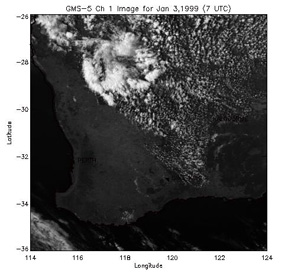
|
The
Bunny Fence Experiment This study is based on the hypothesis that the human induced landscape heterogeneity in southwest Australia has a significant influence on the climate in this region. We propose that the landscape heterogeneity influence the regional climate through the alteration of atmospheric thermodynamic structure, the nature of existing secondary circulations such as sea breeze, low level jets and generating new types of mesoscale circulations. These changes will in turn impact cloud formation and regional hyrology of this region. We will address a series of scientific questions related to the hypothesized impact on land use on regional climate of southwest Australia using a combination of ground, satellite, aircraft observations, spatial statistical analysis and numerical modeling experiments. This study will utilize these observations to characterize surface energetics and atmospheric thermodynamic structure as a function of land use and its relationship to cloud formation. Observations will also be used to verify the existence of secondary mesoscale circulations generated by landscape heterogeneity, and then numerical simulations will be used to verify if such circulations are indeed caused by landscape heterogeneity. Numerical model simulations also will be used to examine the impact of land use on other features such as sea breeze and low level jets and also on cloud formation, with observations used to initialize and validate the numerical models. Detailed statistical analysis of satellite observed cloudiness, ground and aircraft observations of atmospheric thermodynamic structure and surface energetics will be used to verify a series of proposed hypotheses on the influence of land use on the regional climate of southwest Australia. The proposed study will contribute to resolving the ongoing debate on the impact of landsacpe heterogeneity on regional climate. This material is based upon work supported by the National Science Foundation under Grant No. 0523583. Any opinions, findings, and conclusions or recommendations expressed in this material are those of the author(s) and do not necessarily reflect the views of the National Science Foundation |

